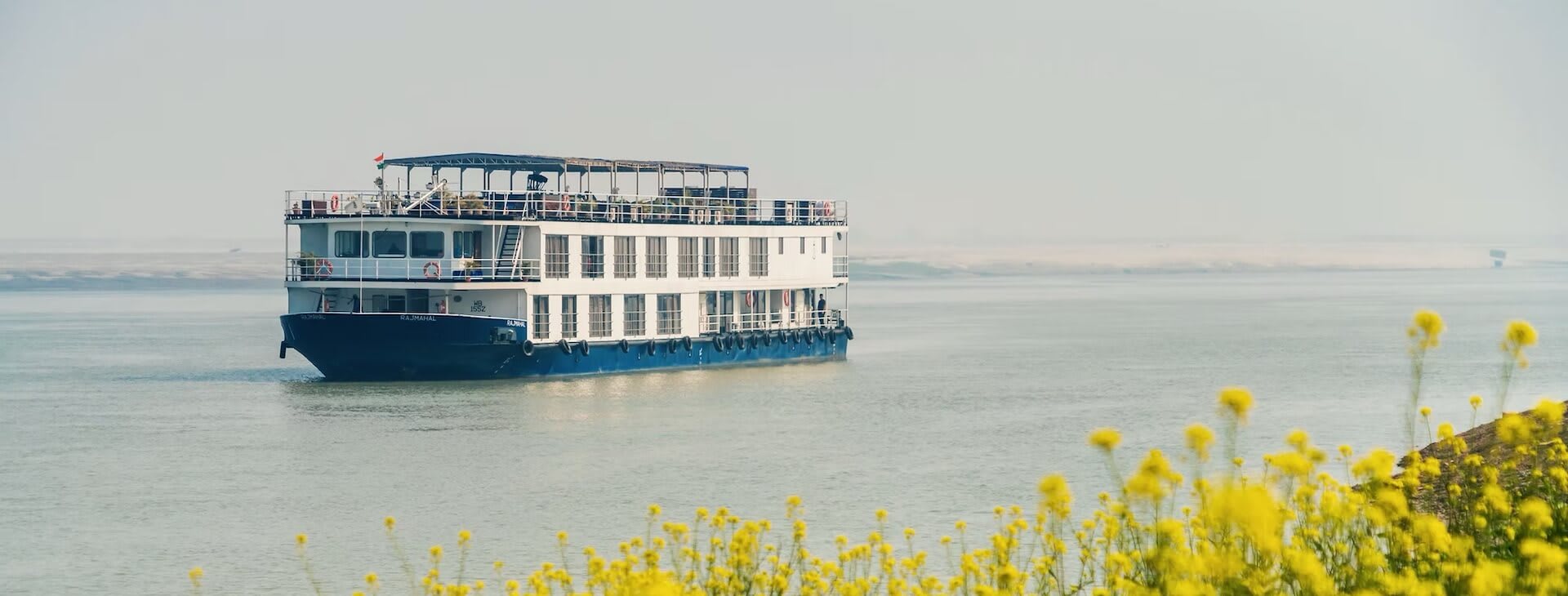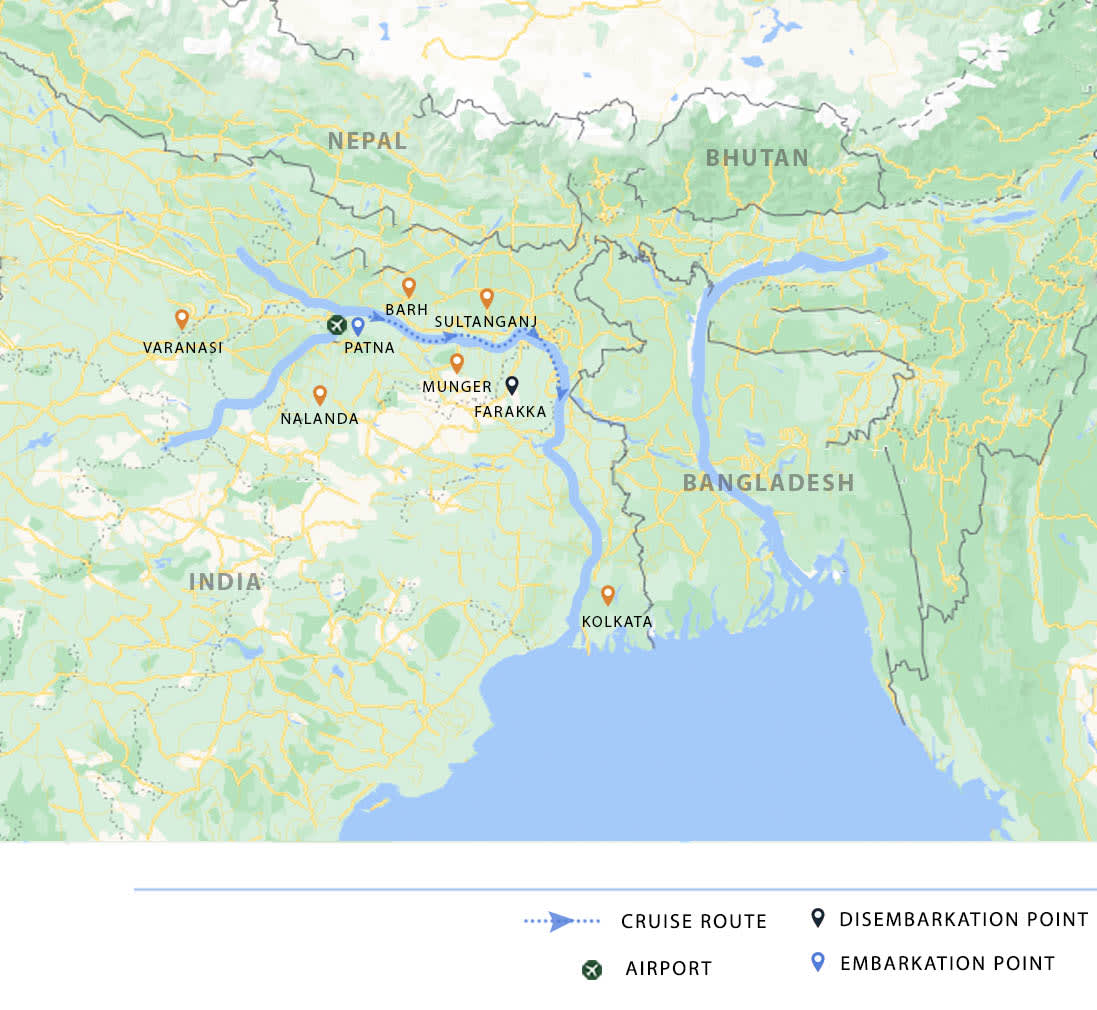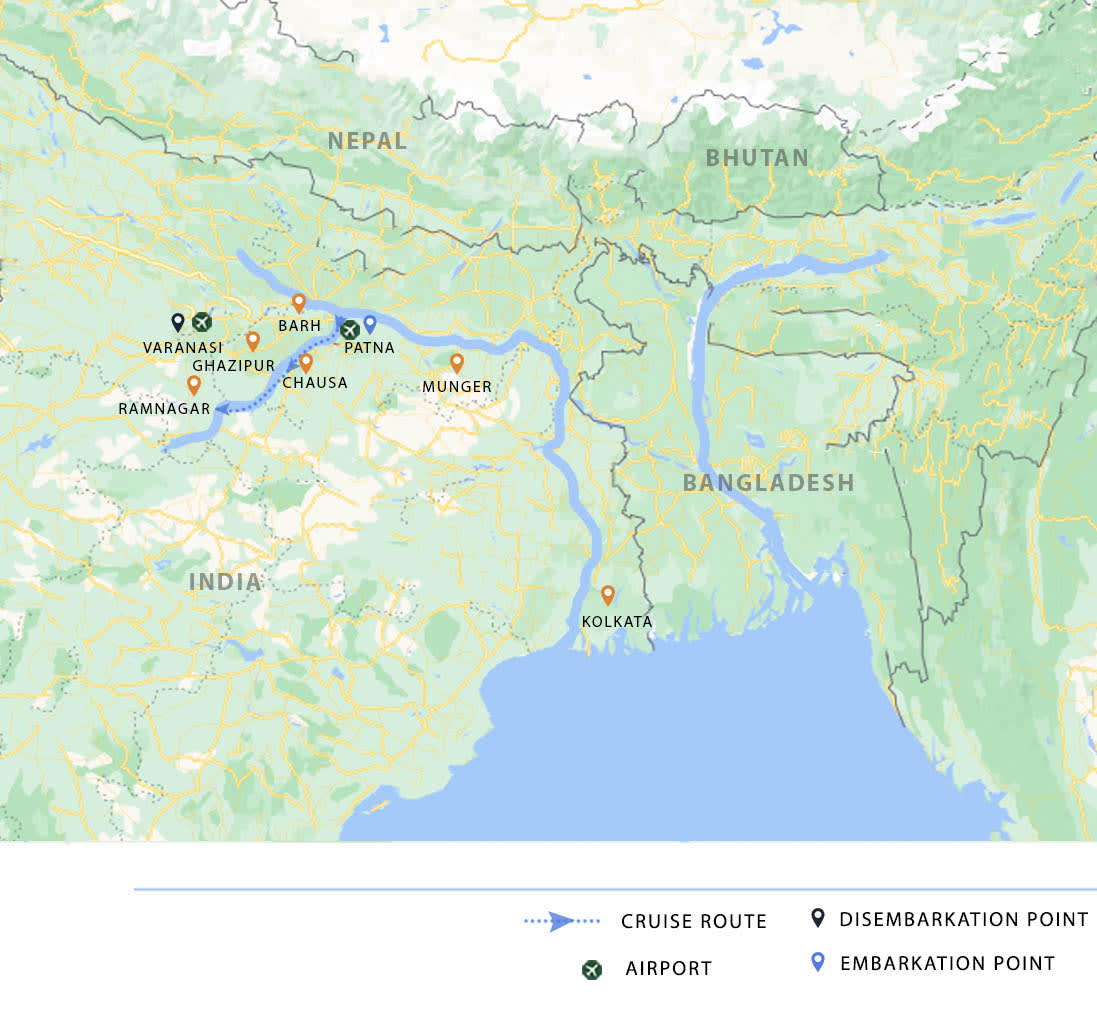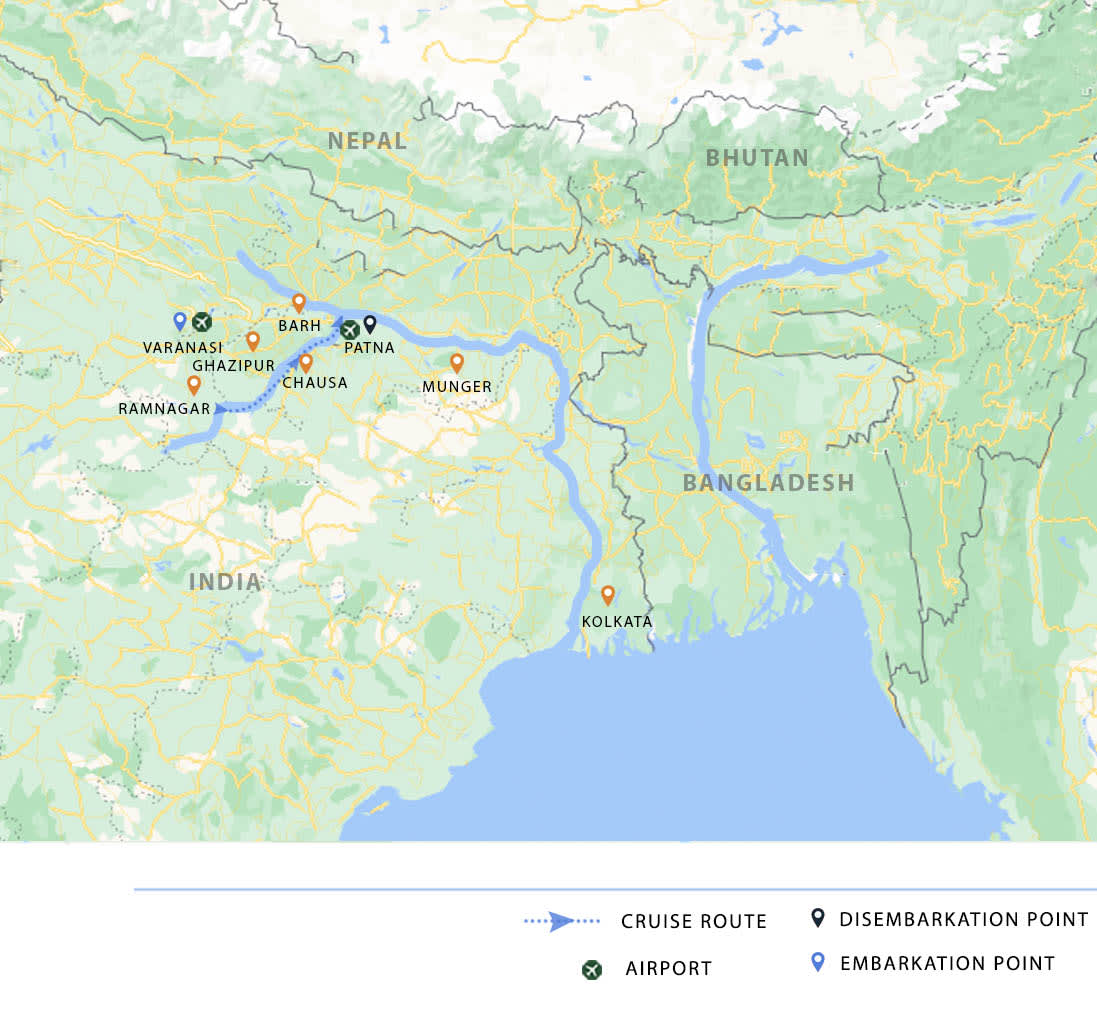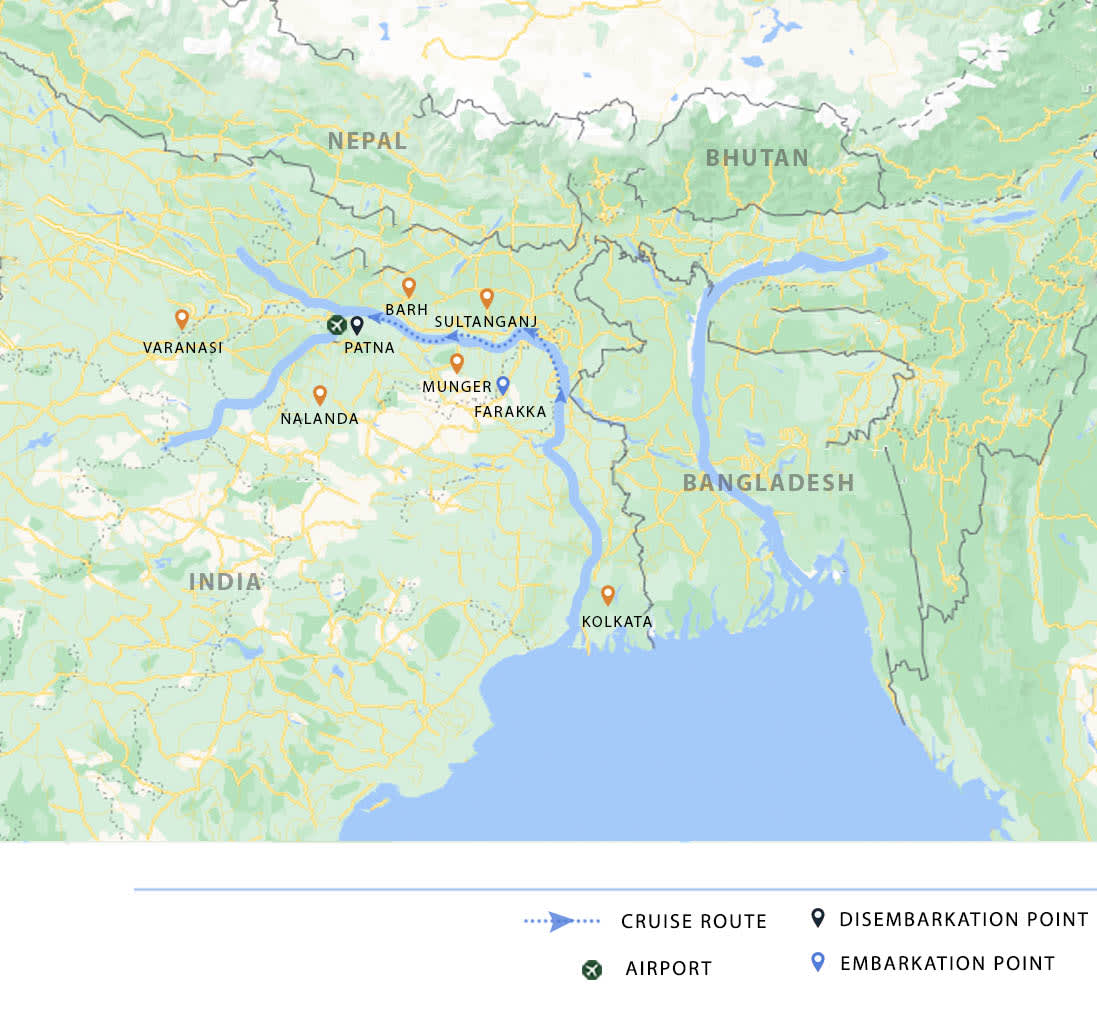Overview
The sophisticated Rajmahal is a 50-meter, gracefully styled riverboat for up to 44 travelers across 22 cabins, exclusively designed to navigate the storied waterways of India’s spiritual heartland. With an extra-shallow draught and lower profile than more conventional vessels she can cruise further upstream than virtually all other boats for exclusive access to the remotest gems of the region.
Life On Board
Her décor reflects colonial elegance brought to life with traditional Indian designs, offering a warm and refined ambiance. All cabins are spacious, climate-controlled, and feature large sliding glass windows and French balconies, ensuring panoramic views of the river are a constant companion to your journey. Guests can relax in the comfortable, air-conditioned saloon, find a quiet moment in the library, or ascend to the vast canopied sundeck to feel the river breeze.
An expert culinary team crafts a delicious mixture of Assamese (milder than most Indian cuisine) and Continental fare, complemented by a wide choice of wines, spirits, and beer. With an attentive crew and services like a small spa, minibar, and turndown service, the ambiance is one of comfortable authority and accessible luxury.
Ganges & Hooghly Exploration
The Rajmahal focuses on voyages along the legendary rivers of the Ganges and the Hooghly, linking significant cities and spiritual sites. These bespoke journeys offer immersive discovery into destinations along the river, which are central to India’s cultural heritage, religious traditions, and exploration history.
A naturalist onboard guides every aspect of the experience, ensuring a deep cultural and ecological understanding. Explorers are invited on a rich shore excursion program, which typically keeps groups small to a maximum of 20 guests per guide.
Activities focus on authentic engagement and adventure, such as exploring the bustling ghats of Varanasi, visiting grand colonial-era architecture, or discovering ancient temples and silk-weaving villages found along the banks. The focus is always on gaining an extraordinary and respectful perspective of India’s ancient and living traditions.
Indian Odysseys
Embarking on a voyage aboard the Rajmahal will leave you feeling like an intrepid, privileged scholar. During your journey, you will connect intimately with the pulse of India’s most significant rivers, witnessing sacred ceremonies, and exploring the foundations of ancient spiritual belief.
You will chart a course through millennia of history, culture, and architecture, from the frenetic energy of Kolkata to the meditative quiet of the Upper Ganges. These Indian odysseys are perfect for the curious and enthusiastic cultural explorer and history enthusiast who values a sophisticated, intimate sanctuary after a day of genuine, adventurous discovery.
Itineraries & Prices
All itineraries are subject to change due to seasonal weather conditions (and resultant variations in river and tributary water levels) affecting accessibility to locations. Thus navigation routes, times and excursions may need to be modified at the cruise captain’s or your guide's discretion.
Embarkation
AM: This morning you’ll be collected from your hotel to embark the ship by 11am. Sailing upstream, you pass the old Dutch settlement of Chinsura before landing to visit the imposing Imambara at Hooghly. With verses from the Koran written on its walls, the Imambara is an opportunity to step back in time and relive a slice of Islamic history in Bengal.
PM: After the visit, reboard your cruise and start sailing, leaving urban sprawl far behind.

Kalna
AM: Enjoy breakfast with an ever-changing view as you sail upstream, before landing at the country town of Kalna. Here you’ll take cycle rickshaws to see a group of some of Bengal’s most attractive terracotta temples, as well as the unique Shiva temple with its concentric rings made up of 108 shrinelets. Continue on through the countryside to Mayapur to visit the vast new ISKCON (International Society for Krishna Consciousness) temple which dominates the skyline. As the headquarters of ISKCON, or the Hare Krishna movement, the temple receives over a million singing and dancing devotees a year from around the world.
PM: Sail downstream as dusk falls to a mooring near Kalna.

Chandernagore
AM: This morning you’ll sail downstream and visit a saree-weaving village before continuing on to Chandernagore. A French possession until 1950, this old colonial town offers a chance to visit an 18th century church as well as Dupleix Palace, the erstwhile residence of the Governor-General of French India and now a fascinating museum.
PM: Later, sail on down to Kolkata.

Disembarkation
AM: After breakfast, disembark and transfer to the airport or your hotel in Kolkata.
Note: This itinerary, including the cruise and approximate driving durations, is subject to river and weather conditions.

Embarkation
PM: Arrive at Patna by road, rail or air and you’ll be transferred from the airport or railway station to your ship. Embark from 4pm onwards and enjoy dinner on board.
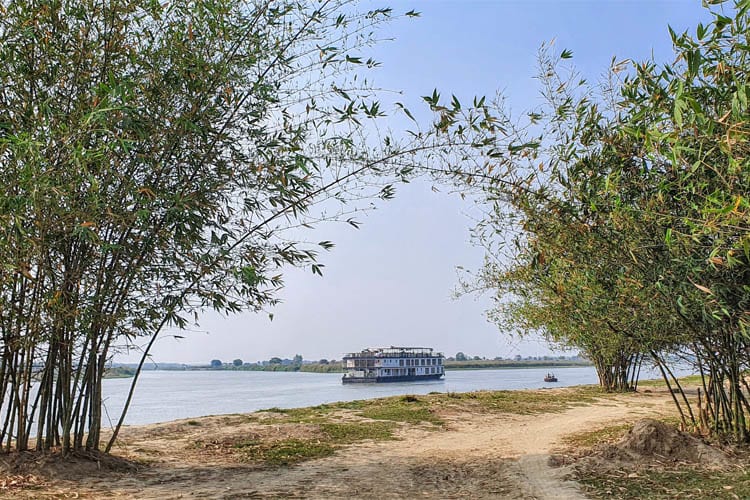
Tour of Patna
AM: This morning, you’ll take a tour of Patna, visiting the 18th century Gola Ghar granary, the great Sikh gurdwara and the rich collections of the State Museum.
PM: Return to your ship and pass near the old East India Company opium warehouses to cruise downstream, mooring for the evening at Barh.
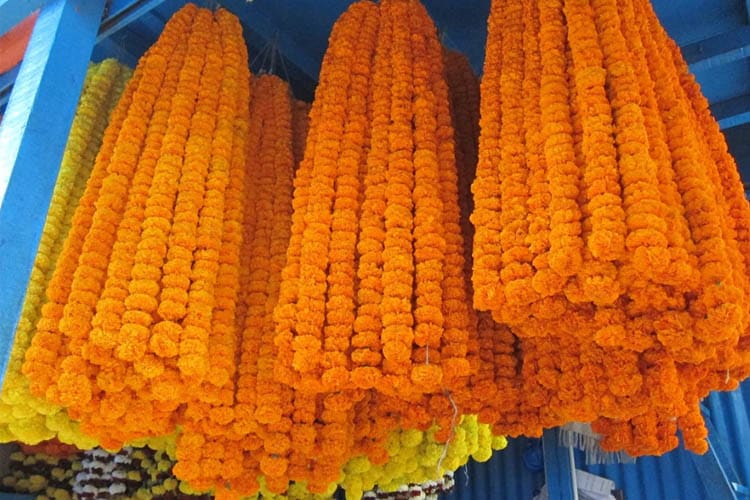
Excursion to Nalanda
AM: Today brings an excursion to Nalanda, recently included as a UNESCO World Heritage site where visits include the excavated great Buddhist monastery and stupa along with the adjoining museum. Nalanda is also the world's oldest seat of learning, once welcoming over 10,000 students at its height. Later, you’ll visit the marbled Pawapuri Jain temple in the middle of a lake.
PM: You return in the evening to your ship, which will have sailed down to the great bridge at Mokameh, where the naturalist Jim Corbett spent his working life overseeing the ferry crossing.
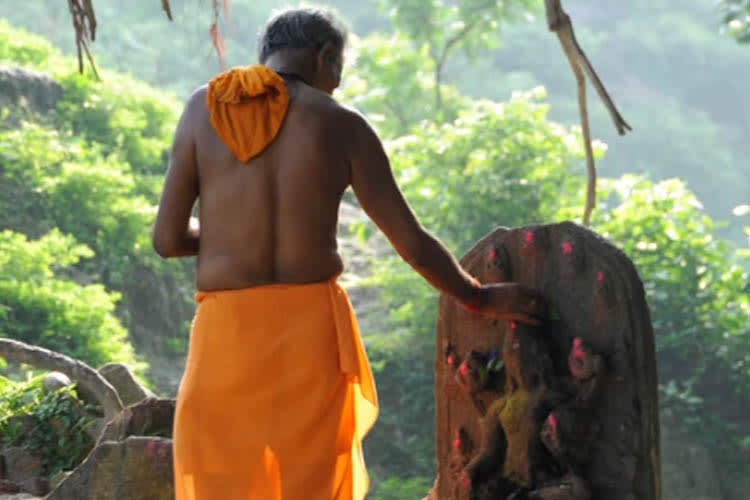
Monghyr
AM: Today you’ll sail down to Monghyr, with its large Mughal fort and East India Company cemetery, where villagers now live among the grandiose tombs.
PM: You’ll also visit Pirpahar Hill, crowned by a fine old mansion, and the Sita Kund hot springs, before continuing your cruise downstream to anchor near Jahangira Island at Sultanganj, a place of pilgrimage with early Hindu carvings in the rock. On shore, another picturesque rock is topped with a mosque.
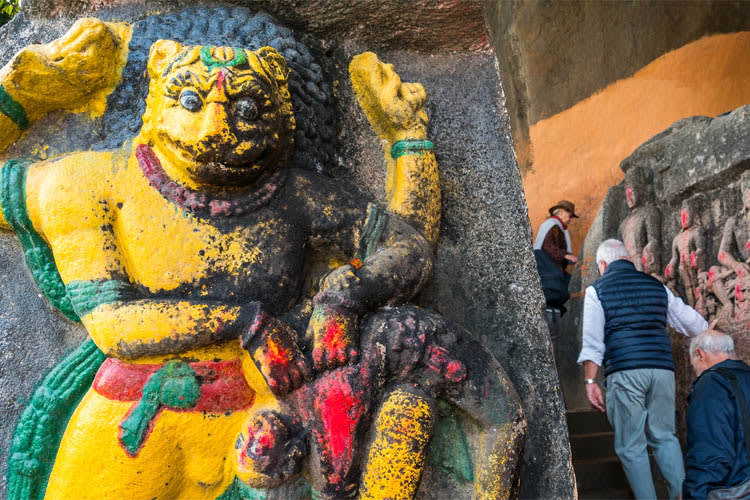
Strech of The River
AM: Sailing on this morning, you journey along a stretch of the river where Gangetic Dolphin may be seen, to Bhagalpur, a centre of silk production. Here, you’ll visit the elegant 18th century mansion built by Augustus Clevland as well as a silk-weaving village. You sail on, passing close to the island shrine at Colganj, boasting both Buddhist and Hindu cave temples, and a darker past as the former home of the murderous Thug sect. Close to here you visit idyllic Bateshwar with 6th century Hindu carvings and the nearby ruins of an 8th century Buddhist stupa and monastery at Vikramshila.
PM: You’ll anchor for the night near the confluence with the Kosi, which flows down from Nepal.
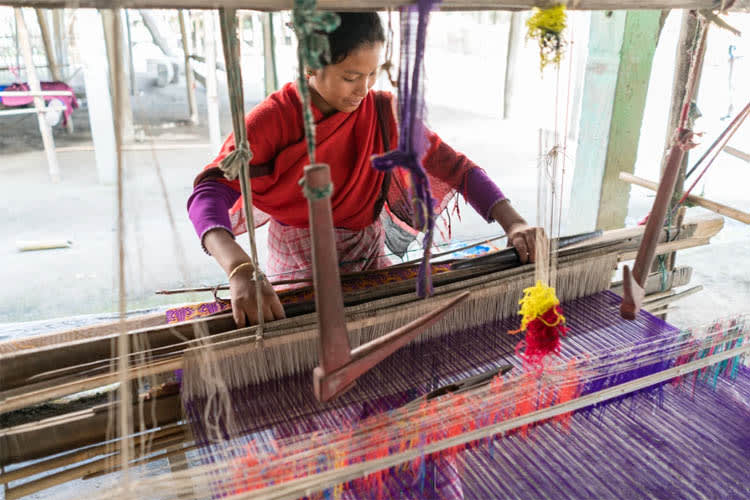
Rajmahal
AM & PM: This morning you sail down to Rajmahal, beneath the Rajmahal Hills. Rajmahal is one of those places, so common in India, which feature in no guidebook, yet offer both interest and atmosphere in abundance. Once known as Akbarnagar, the town was founded by the Mughal Emperor Akbar as his eastern capital and Shah Jehan, builder of the Taj Mahal, spent much of his youth here. There are remains of palaces, forts and mosques submerged in vegetation which you’ll explore before continuing on down to the Farakka Barrage.
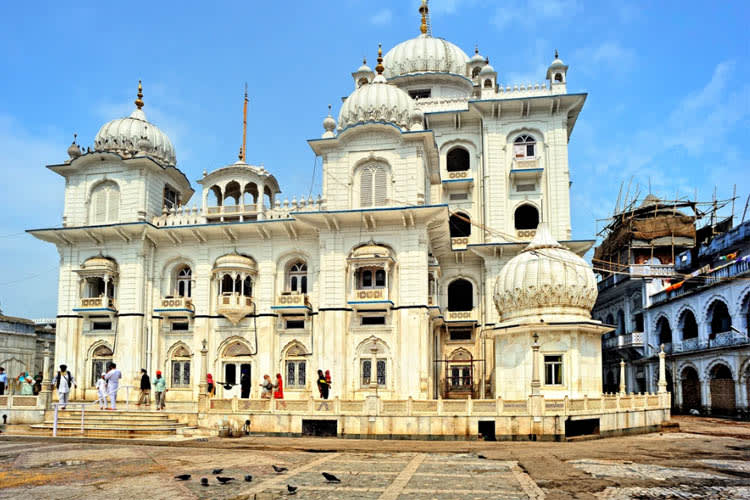
Disembarkation
AM: For those taking only Bengal Despatch 4, transfer to Farakka station in the morning for a 4hr (approx.) train journey to Kolkata. Our representatives will meet you on arrival and transfer you to a central Kolkata hotel. Those taking Bengal Despatch 5, remain on board for an excursion to Gaur and Pandua.
Note:These itineraries, including cruises and approximate durations, are subject to river and weather conditions.
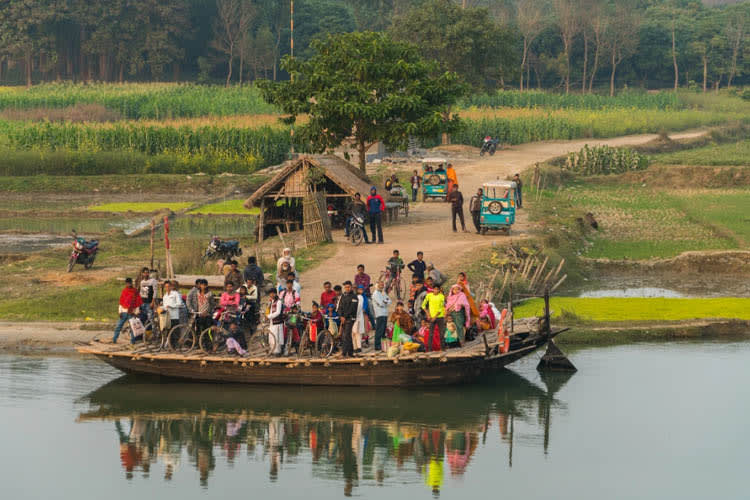
Embarkation
PM: Take a 4hr (approx.) train journey from Kolkata to Farakka in the afternoon, and then a short road transfer to the ship. Guests joining independently at Farakka can board the ship from midday onwards.
Our guests joining Bengal Despatch 5 from another cruise will enjoy a full day excursion by road to Gaur. This quiet, deserted place was once one of India’s great cities, first under the Hindus in the 12th century, then as the Muslim capital of Eastern India from the 14th to the 16th century, and its plentiful remains of mosques, palaces and gateways are testament to this diverse history. Later, travel on through the town of Malda, or English Bazar, to Pandua where you will visit the great 14th century Adina Mosque before returning to Farakka where your ship will have passed through the lock at the barrage.

Farakka
AM & PM: This morning’s cruise is along a straight canal section to Jangipur, where the afternoon is free to explore this small country town on foot.
Guests who joined at Farakka will have the opportunity to experience the full day excursion by road to Gaur, near the town of Malda, or English Bazar. Explore the rich tapestry of historical influences in the region, travelling from 12th century Hindu rule to the Muslim capital of Eastern India in just one, quiet and deserted spot. The remains of mosques, palaces, and gateways tell the tale of what was once one of India’s great cities. You rejoin the ship in the evening near Jangipur.
Set sail down the Lower Ganges, a charming waterway twisting and turning between banks lined with mustard fields and mango orchards. Moor at Baranagar for the night.

Baranagar
AM: This morning you’ll visit the delightfully sleepy village of Baranagar and take a tranquil walk through fields to visit three gorgeous miniature terracotta temples. This is certainly rural India at its most idyllic.
Continue on down past Azimganj, boasting some fine riverside mansions, to Murshidabad where the Nawab’s great Hazarduari Palace dominates the waterfront. Built by an English architect in 1837, the palace hosts an extensive collection of pictures, china, weapons and other objects. Carry on to visit the great Katra Mosque before driving out to see the Katgola Palace. Built in classical Georgian style by rich local merchants, Katgola Palace represents the other side of the coin of the 'White Mughal' period when English and Indian cultures came close to fusion.
PM: Moor overnight on the riverbank across from town.

Khushbagh
AM: Sail downstream a short distance then walk to the Khushbagh, a peaceful Mughal-style garden enclosing the tombs of Siraj-ud-Daulah – the last independent Nawab of Bengal – and his family. Return to the ship and continue downstream past the old British cantonment of Berhampur. You’ll moor at a rural spot close to the battlefield of Plassey where, in 1757, Robert Clive, the Commander-in-Chief of British India, defeated Siraj-ud-Daulah to change the course of Indian history.
PM: You can walk through the fields to the commemorative obelisk before cruising on to a mooring near Katwa, a market town with narrow bustling bazaars.

Matiari
AM & PM: Visit the brassworking village of Matiari where you can see the traditional craft of beating out brass water pots and other vessels. Continue on through the countryside to Mayapur to visit the vast new ISKCON (International Society for Krishna Consciousness) temple which dominates the skyline. As the headquarters of ISKCON, or the Hare Krishna movement, the temple receives over a million singing and dancing devotees a year from around the world.

Kalna
AM: Continue on to the country town of Kalna. Take cycle rickshaws to see some of Bengal’s most attractive terracotta temples, as well as the unique Shiva temple with concentric rings made up of 108 shrinelets. Sailing on, you leave the fields behind and arrive at the outskirts of bustling Kolkata where you land at Hooghly to visit the imposing Imambara. With verses from the Koran written on its walls, the Imambara is an opportunity to step back in time and relive a slice of Islamic history in Bengal.
PM: Sail downstream past fine waterfront buildings and the old Dutch settlement at Chinsura to moor at Chandernagore.

Chandernagore
AM: At Chandernagore, a French possession until 1950, you’ll visit the 18th century church and Dupleix Palace, former residence of the Governor-General of French India, before continuing down to Barrackpore. Land and take a walk through the cantonment – past the Semaphore Tower, Government House, the Temple of Fame and Flagstaff House – to get a better understanding of India's journey to independence.
PM: Subject to river tide, cruise under the Howrah Bridge to reach central Kolkata.

Disembarkation
AM: Disembark and transfer to central Kolkata or the airport.
Note: These itineraries, including cruises and approximate durations, are subject to river and weather conditions.

Embarkation
AM & PM: This morning, you’ll be collected from your hotel in Kolkata to embark your ship by midday. Sail past the old Danish colony of Serampore to Barrackpore. Land and take a walk through the cantonment – past the Semaphore Tower, Government House, the Temple of Fame and Flagstaff House – to get a better understanding of India's journey to independence. Sail up to Chandernagore, a French possession until 1950.

Down History
AM: Visit an 18th century church and Dupleix Palace, once the residence of the erstwhile Governor-General of French India. Sail upstream past the old Dutch settlement of Chinsura before landing to visit the imposing Imambara at Hooghly. With verses from the Koran written on its walls, the Imambara is an opportunity to step back in time and relive a slice of Islamic history in Bengal.
PM: Sail into the night to a mooring near Kalna.

Kalna
AM: After breakfast, land at the country town of Kalna and take rickshaws to see a group of some of Bengal’s most attractive terracotta temples including a unique Shiva temple with concentric rings made up of 108 shrinelets. You’ll also visit a muslin-weaving centre before continuing on through the countryside to Mayapur to visit the vast new ISKCON (International Society for Krishna Consciousness) temple which dominates the skyline. As the headquarters of ISKCON, or the Hare Krishna movement, the temple receives over a million singing and dancing devotees a year from around the world.
PM: Sail on through the night to a mooring near Matiari.

Matiari
AM: This morning you’ll visit the charming riverside village of Matiari, known for its brass-working. Interact with the villagers and witness the traditional process of beating out brass water pots and other vessels. You then cruise on and visit the battlefield of Plassey where, in 1757, Robert Clive, the Commander-in-Chief of British India, defeated Siraj-ud-Daulah, the last independent Nawab of Bengal, to change the course of Indian history.
PM: Moor close to Khushbagh for the night.

Khushbagh
AM: This morning, you’ll walk to Khushbagh, a peaceful Mughal-style garden that encloses the tombs of Siraj-ud-Daulah and his family. Continue a little way upstream to where the great Hazarduari Palace dominates the waterfront. Built by an English architect in 1837, the palace hosts an extensive collection of pictures, china, weapons and other objects. Carry on to visit the great Katra Mosque before driving out to see the Katgola Palace. Built in classical Georgian style by rich local merchants, Katgola Palace represents the other side of the coin of the 'White Mughal' period when English and Indian cultures came close to fusion.
PM: Moor overnight on the riverbank across from the town at Baranagar.

Baranagar
AM: This morning you’ll walk through the fields of the delightfully sleepy village of Baranagar to visit its three gorgeous miniature terracotta temples. This is rural India at its most idyllic. Continue up the lower Ganges (or the Hooghly), which transforms into a picturesque waterway, twisting and turning between banks lined with mustard fields and mango orchards.
PM: Carry on up a long canal section to a mooring close to the Farakka Barrage.

Gaur
AM & PM: Disembark for a full-day excursion by road to Gaur, near the town of Malda or English Bazar. This quiet, deserted place was once one of India’s great cities, first under the Hindus in the 12th century, then as the Muslim capital of Eastern India from the 14th to the 16th century. There are plentiful remains of mosques, palaces and gateways and you’ll visit a number of the most interesting before rejoining the ship in the evening.
Disembarkation
AM: Those taking only Bengal Despatch 1 will transfer to Farakka station in the morning for a 4 hr (approx.) train journey to Kolkata. Our representatives will meet you on arrival and transfer you to a central Kolkata hotel.
For those taking both Bengal Despatch 1 and 2 cruises, an excursion by road takes you to Pandua where you will visit the great 14th century Adina Mosque before returning to Farakka where your ship will have passed through the lock at the barrage.
Note: These itineraries, including cruises and approximate durations, are subject to river and weather conditions.

Embarkation
PM: Arrive at Patna by road, rail or air; transfer from airport or railway station to ship is included in the cruise cost. Embark on your cruise ship from afternoon onwards, and enjoy dinner on board while sailing upstream.
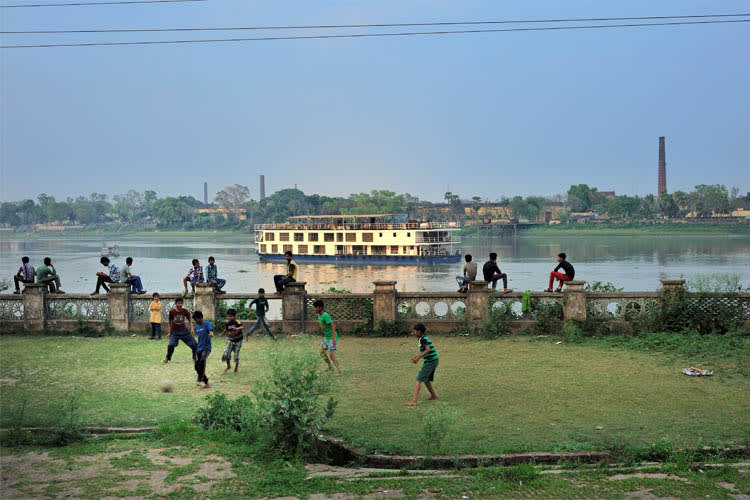
Doriganj
AM: This morning you’ll cruise upstream during breakfast before landing to visit a spectacular small Mughal tomb at Maner.
PM: Reboard and continue past the confluence with the River Sone to the busy river port of Doriganj, mooring at an overnight stop near the confluence with the River Goghra.
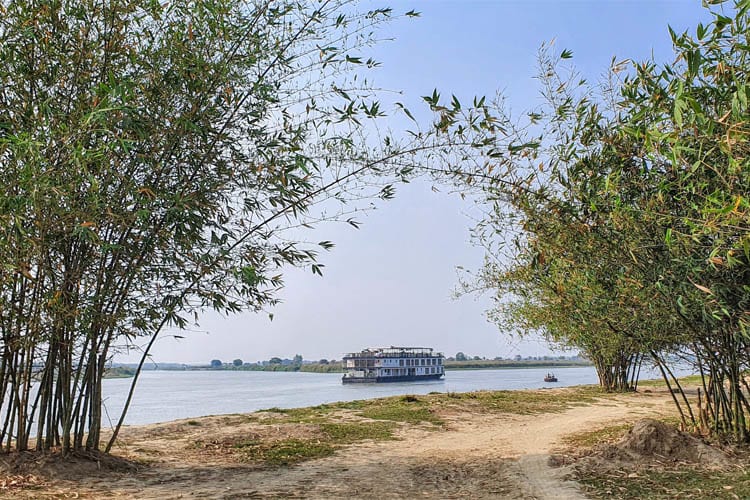
Ballia to Buxar
AM & PM: Today you continue up past Ballia to Buxar, famous for the battle fought here in 1764 which, together with Plassey, laid the foundations of the British Raj. Visit the memorial on the battlefield and the old East India Company cemetery in town. Later, take a short cycle rickshaw ride up to the ghats of Buxar.
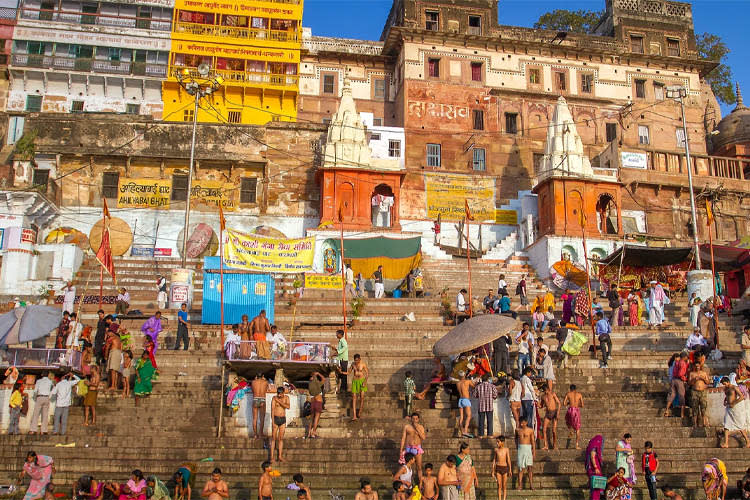
Ghazipur
AM & PM: Sail upstream today past Chausa to Ghazipur, still a centre for (official) opium production. Visit the imposing tomb of Lord Cornwallis, the General responsible for the British defeat at Yorktown and, if time permits, take a stroll through the busy Ghazipur bazaar, a quintessential Indian experience.
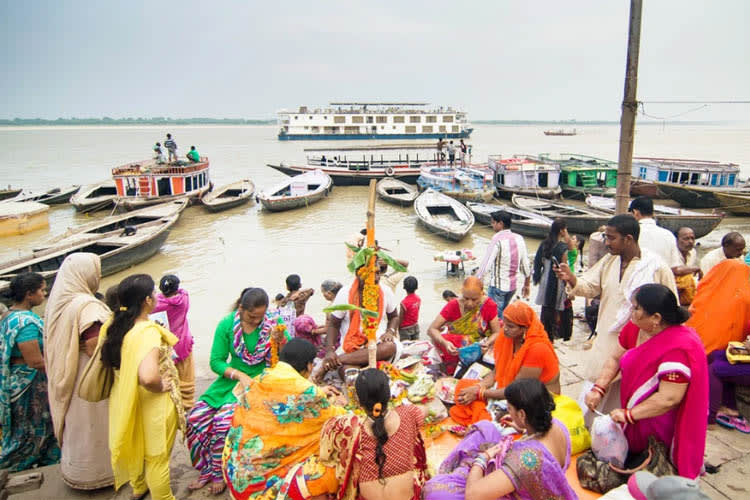
City of Light
AM: This morning, sail on to Varanasi, formerly Benaras. Also known as the ‘City of Light’, it is one of the oldest continuously inhabited cities in the world, dating back 3,000 years. Mark Twain once wrote that "Benaras is older than history, older than tradition, older even than legend, and looks twice as old as all of them put together". An accurate description, Varanasi is arresting to your every sense yet beautifully spiritual for those willing to let go and just be. It's the most important religious site for Hindus and visited by people from all walks of life who come here in the hope of attaining moksha or salvation.
PM: After lunch, visit the Buddhist site at Sarnath and the Deer Park where the Buddha preached his first sermon, as well as the nearby archaeological museum.
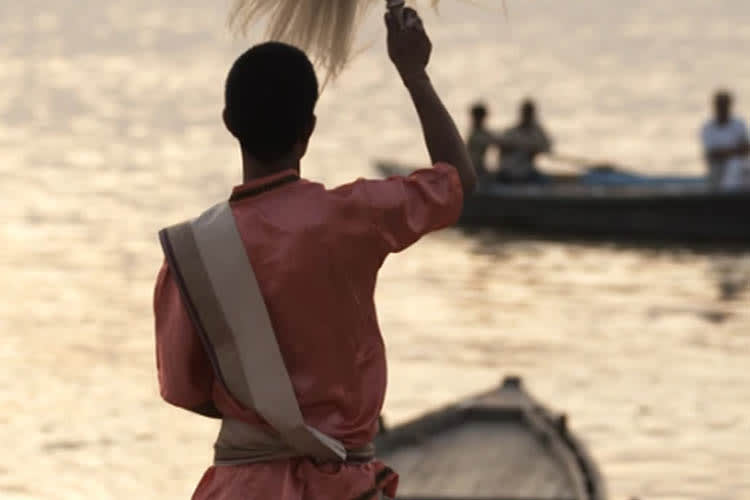
Ramnagar
AM: This morning, sail past the ghats of Varanasi to visit Ramnagar and see the Maharaja’s Palace and museum. Sail on to visit Chunar, the great Mughal Fort, the old British cemetery and the Mughal tombs nearby. Carpet weaving and Chunar pottery offer a taste of the traditional industries that still thrive in the region.
PM: Sail down to anchor at Ramnagar for the night.
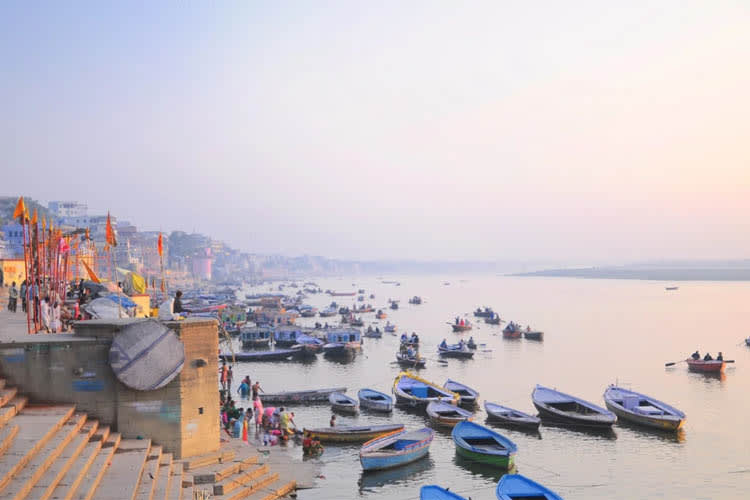
Varanasi
AM: An early start this morning as you take rowing boats at dawn to soak in the lively and colorful bathing ghats of Varanasi. After a reviving breakfast onboard, disembark again to take a walk through the busy alleys of Varanasi to experience the beating heart of the city. PM: In the evening, take rowing boats once again to join the evening Ganga Aarti ceremony, where young priests perform their daily rituals with brass lamps and spiritual mantras in front of large crowds from all over India and the world. A truly mesmerising sight, this aarti is the essence of Varanasi. Return to the ship anchored at Rajghat.
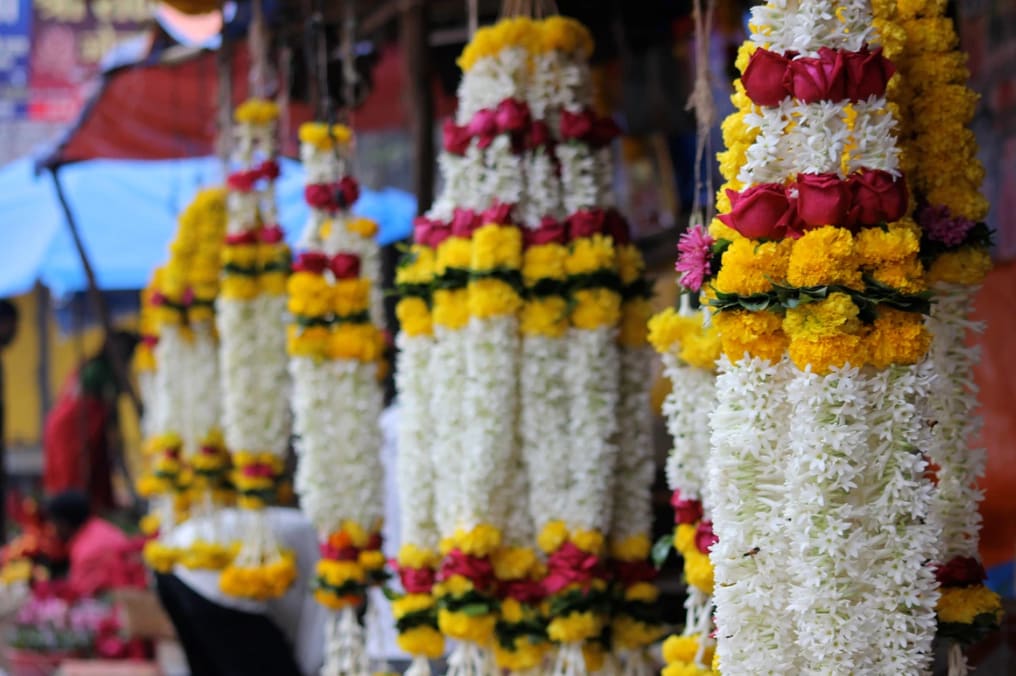
Disembarkation
AM: After breakfast, disembark and transfer to Varanasi airport or railway station.
Note: These itineraries, including cruises and approximate durations, are subject to river and weather conditions.
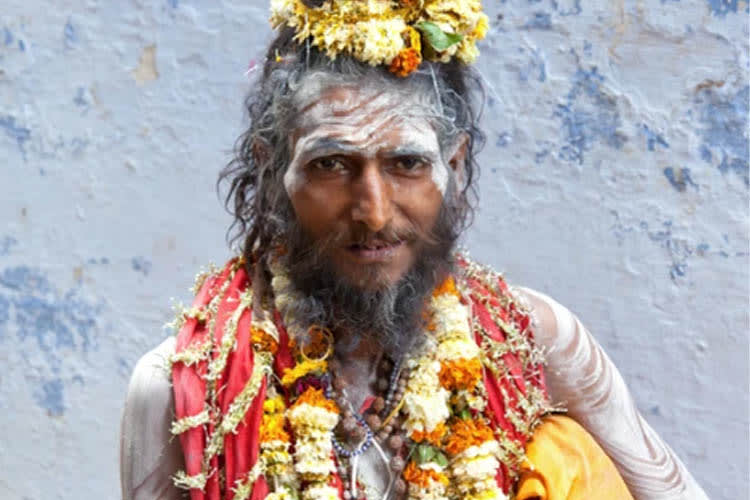
Embarkation
AM: Arrive at Varanasi by road, rail or air and be transferred from the airport or railway station. The City of Light is one of the oldest continuously inhabited cities of the world, dating back 3,000 years. Mark Twain once wrote: "Benaras is older than history, older than tradition, older even than legend, and looks twice as old as all of them put together". An accurate description, Varanasi is arresting to your every sense yet beautifully spiritual for those willing to let go and just be. It is the most important religious site for Hindus and visited by people from all walks of life who come here in the hope of attaining moksha or salvation.
PM: Embark your ship and sail downstream a short distance before putting down anchor for the night. Enjoy dinner on board.
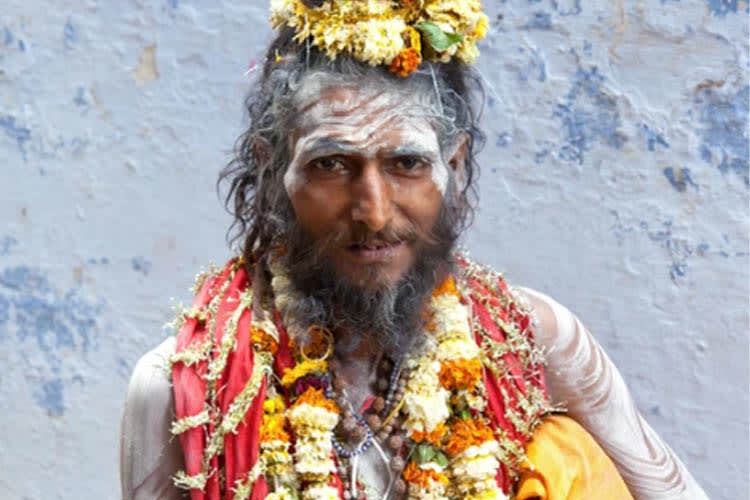
Ramnagar
AM: This morning you’ll sail past the ghats of Varanasi to visit Ramnagar to see the Maharaja’s Palace and museum. Sail up to visit Chunar, the great Mughal Fort, the old British cemetery and the Mughal tombs nearby. Carpet weaving and Chunar pottery offer a taste of the traditional industries that still thrive in the region.
PM: Sail on to anchor at Ramnagar for the night.
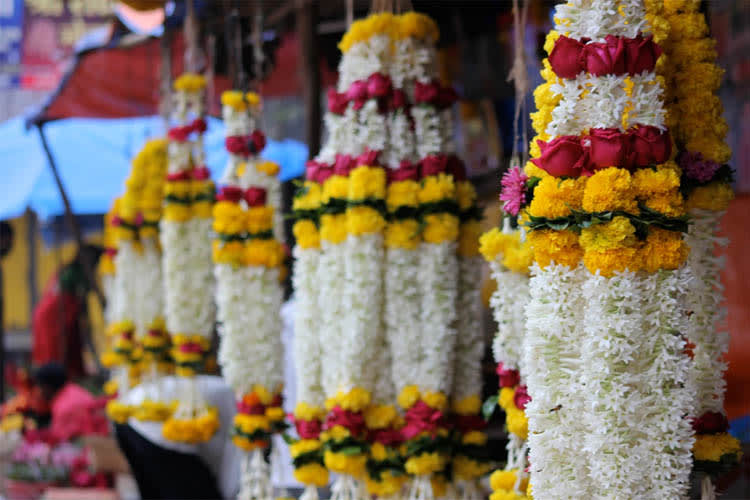
City of Light
AM: An early start this morning as you take rowing boats at dawn past the busy and colourful bathing ghats of Varanasi. After a reviving breakfast, you’ll be driven to visit the Buddhist site at Sarnath, the Deer Park where the Buddha preached his first sermon and the archaeological museum.
PM: This evening, disembark and take a walk through the busy alleyways of Varanasi to experience the beating heart of the city. Join the Ganga Aarti ceremony, where young priests perform their daily rituals with brass lamps and spiritual mantras in front of large crowds from all over India and the world. A truly mesmerising experience, this aarti is the essence of Varanasi. Return to the ship anchored at Rajghat.
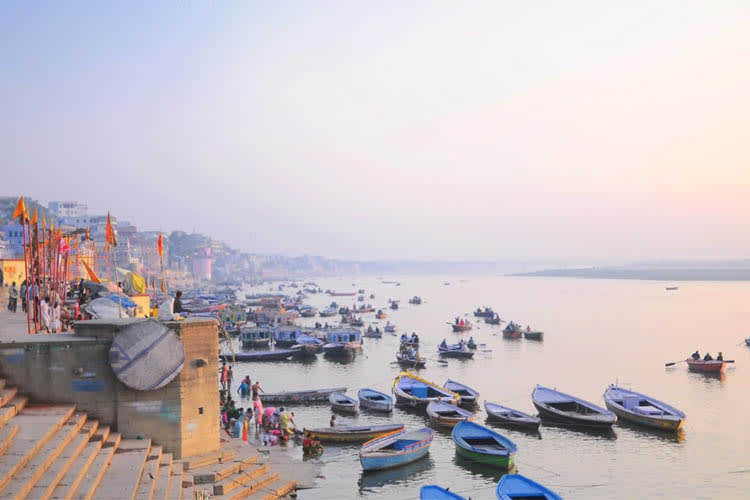
The City of Jaunpur
AM: After breakfast on board, disembark and drive to the city of Jaunpur to see the Mughal Bridge, visit its ancient fort and walk to the splendid Atala mosque.
PM: Return to the ship for lunch and sail downstream towards Ghazipur. Alternatively, some may prefer to stay back and explore Varanasi’s tempting shopping possibilities.
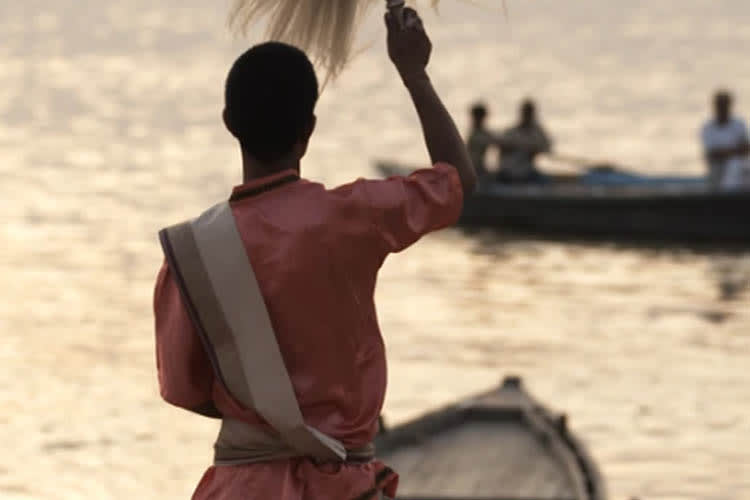
Ghazipur
AM: This morning you continue your journey downstream, disembarking at Ghazipur after breakfast. Visit the imposing tomb of Lord Cornwallis, the General defeated by George Washington in 1781 at Yorktown, so arguably responsible for the loss of the American colonies. If time permits you can take a stroll through the busy Ghazipur bazaar, which offers a quintessential Indian experience.
PM: Later, sail down towards Buxar.
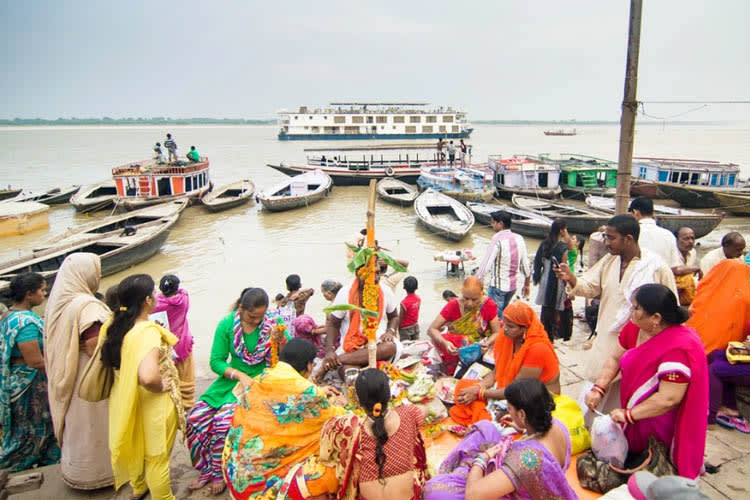
Buxar
AM: After breakfast, disembark for a visit to the country town of Buxar, famous for the battle fought here in 1764 which, together with Plassey, laid the foundations of the British Raj. Visit the memorial on the battlefield and the old East India Company cemetery in town.
PM: Later, take a short cycle rickshaw ride up to the ghats of Buxar. Sail down to anchor near the confluence of the Ghagra.
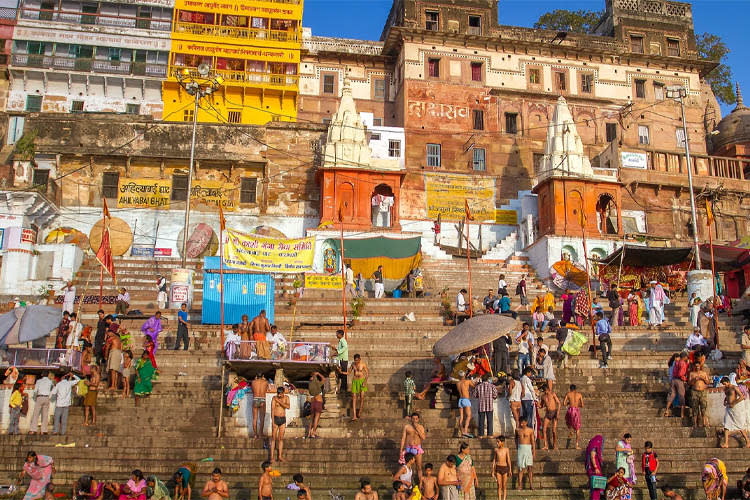
Doriganj
AM: Cruise past the busy river port of Doriganj and the confluence with the Sone River to a ghat from which you’ll visit the small yet spectacular Mughal tomb at Maner.
PM: Sail on to anchor at Patna and visit the great Sikh gurdwara.
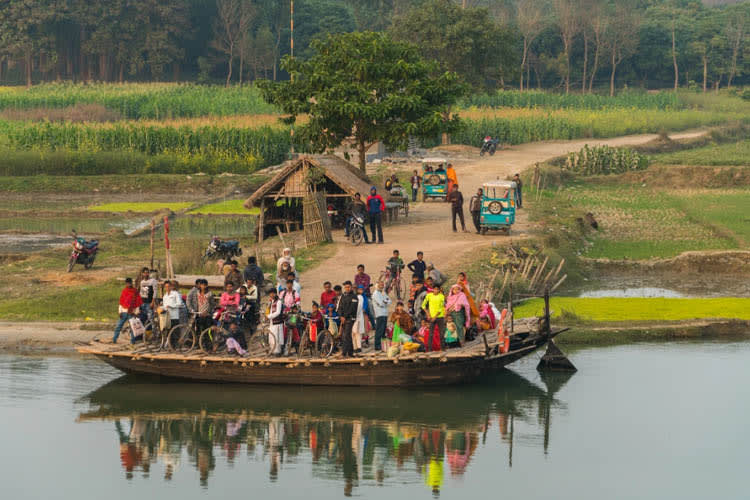
Disembarkation
AM: After breakfast, disembark and transfer to Patna airport or railway station.
Note: These itineraries, including cruises and approximate durations, are subject to river and weather conditions.
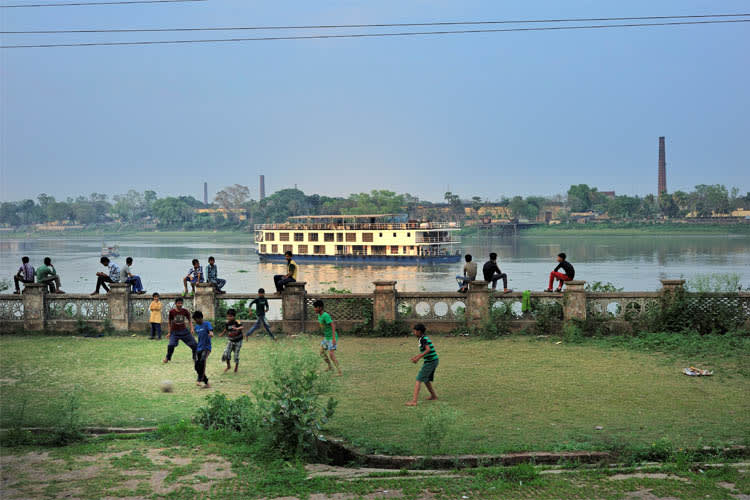
Embarkation
PM: Take a 4hr (approx.) train journey from Kolkata to Farakka in the afternoon, and then a short road transfer to the ship. Guests joining independently at Farakka can board the ship from midday onwards.
For those taking both Bengal Despatch 1 and 2 cruises, a full day excursion by road takes you to Gaur. This quiet, deserted place was once one of India’s great cities, first under the Hindus in the 12th century, then as the Muslim capital of Eastern India from the 14th to the 16th century, and its plentiful remains of mosques, palaces and gateways are testament to this diverse history. Later, travel on through the town of Malda, or English Bazar, to Pandua where you will visit the great 14th century Adina Mosque before returning to Farakka where your ship will have passed through the lock at the barrage.
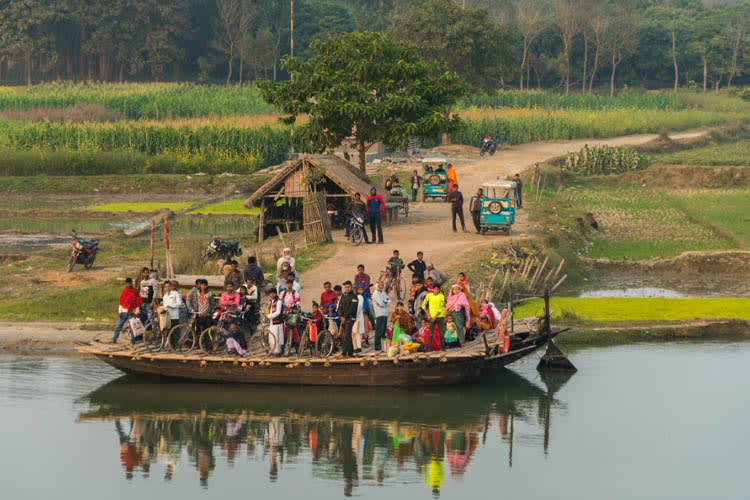
Rajmahal
AM & PM: This morning you’ll leave Farakka and sail out into the almost sea-like Ganges proper, just above the great Farakka Barrage. You sail upstream for much of the morning before anchoring at Rajmahal, one of those places that feature in no guidebook, yet offer both interest and atmosphere in abundance. Once known as Akbarnagar, the town was founded by the great Mughal Emperor Akbar as his eastern capital and Shah Jehan, builder of the Taj Mahal, spent much of his youth here. There are remains of palaces, forts and mosques submerged in vegetation which you can explore before sailing on as far as Manihari Ghat.
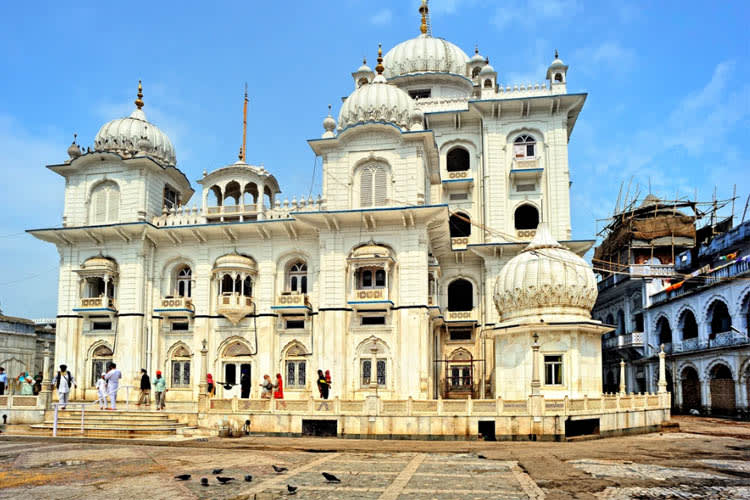
Cruising Upstream
AM: This morning you’ll continue cruising upstream, passing the confluence with the Kosi river which flows down from Nepal. Arrive at idyllic Bateshwar, with its 6th century Hindu carvings, and the nearby ruins of an 8th century Buddhist stupa and monastery at Vikramshila.
PM: Later, you continue onwards to Kehilgaon or Colganj, where the ship awaits you. Sailing on, you’ll pass close to an island shrine with both Buddhist and Hindu cave temples, once the centre of the murderous Thug sect.
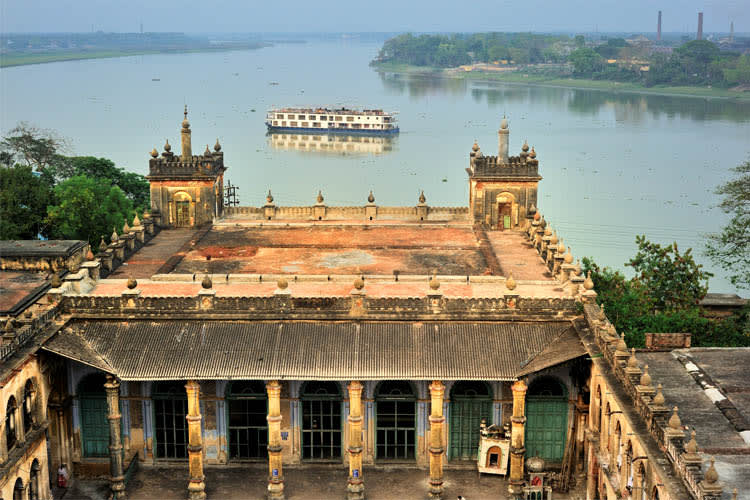
Bhagalpur - Sultanganj
AM & PM: Setting sail this morning you travel along a stretch of river where the endangered Gangetic Dolphin may be seen. Land at Bhagalpur, a centre of silk production, to visit the silk-weaving village and an elegant 18th century mansion built by Augustus Clevland, the collector and magistrate of the town back in the day. You’ll then continue on to Jahangira Island at Sultanganj, a place of pilgrimage with early Hindu carvings in the rock. On shore, another picturesque rock is topped with a mosque, and the stop offers a chance to stroll around the vibrant local market.
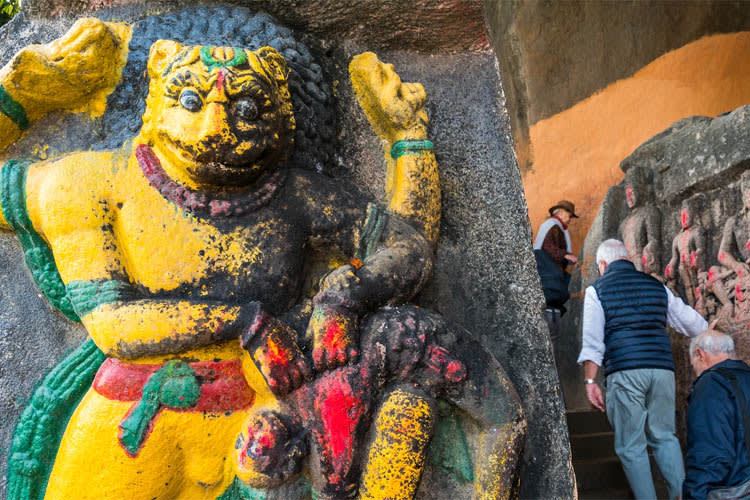
Monghyr
AM & PM: Today you’ll sail on to Monghyr, with its large Mughal fort and East India Company cemetery, where villagers now live among the grandiose tombs. You’ll also visit the Pirpahar Hill, crowned by a fine old mansion, and the Sita Kund hot springs, before continuing your cruise upstream.
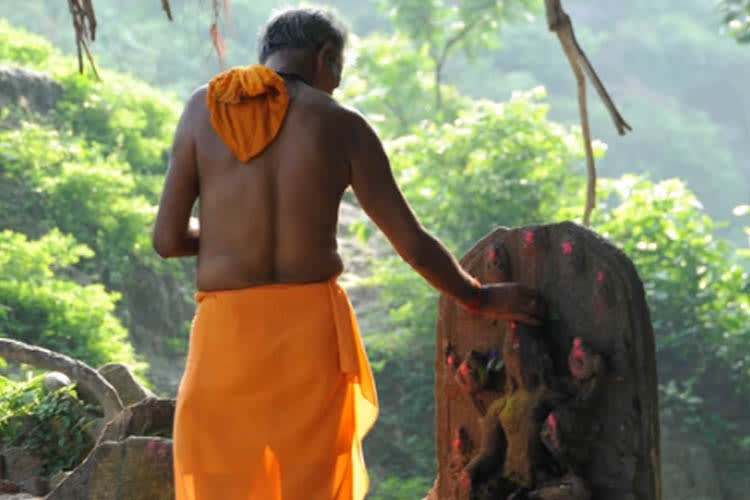
The Great Bridge at Mokameh
AM: This morning, you pass under the great bridge at Mokameh, where the naturalist Jim Corbett spent his working life in charge of the ferry which operated here in days gone by.
PM: Land to visit a bankside village and stretch your legs before sailing on to arrive by evening at Barh.
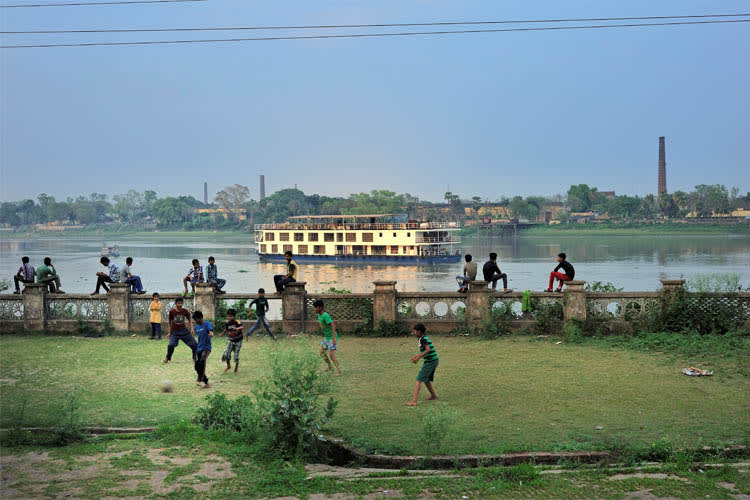
Nalanda
AM: Today brings an excursion to Nalanda, recently included as a UNESCO World Heritage site where visits include the excavated great Buddhist monastery and stupa along with the adjoining museum. Nalanda is also the world's oldest seat of learning, once welcoming over 10,000 students at its height.
PM: Later, visit the marbled Pawapuri Jain temple in the middle of a lake before returning in the evening to Barh to reboard the ship.
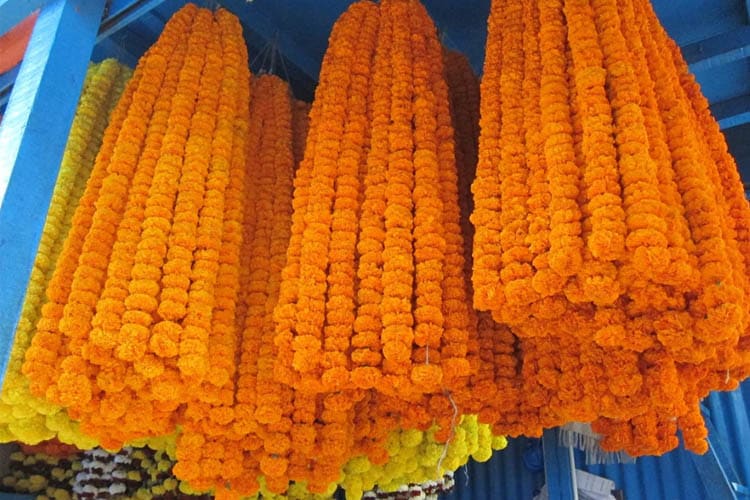
Patna
AM: Today is spent cruising upstream, catching up on reading, chatting with new friends, and watching life unfold on the riverbank. There will be time for a stop at a bankside village where you can stretch your legs and explore this rural area.
PM: You’ll arrive in the evening at Patna, the state capital of Bihar, and moor close to the old East India Company opium warehouses.
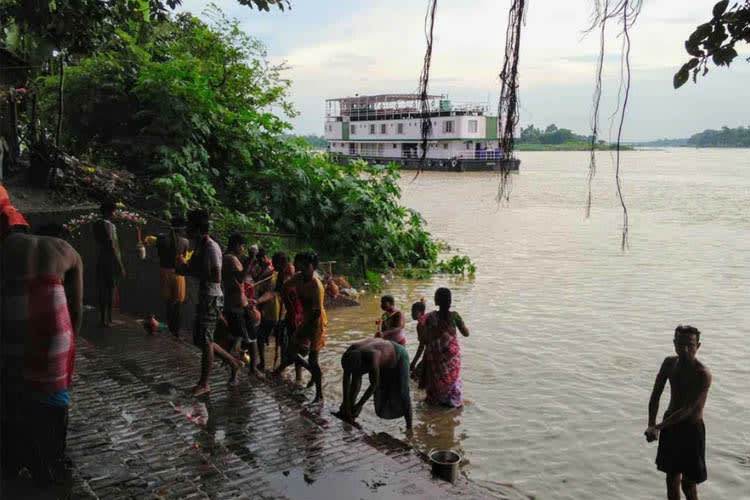
Disembarkation
AM: This morning, you’ll take a tour of Patna and visit the 18th century Gola Ghar granary, the great Sikh gurdwara and the rich collections of the State Museum. Disembark late in the morning and transfer to the airport or station (transfer included). Alternatively, create your own arrangements for road or rail travel to Varanasi, Bodh Gaya or Nepal.
Note: These itineraries, including cruises and approximate durations, are subject to river and weather conditions.
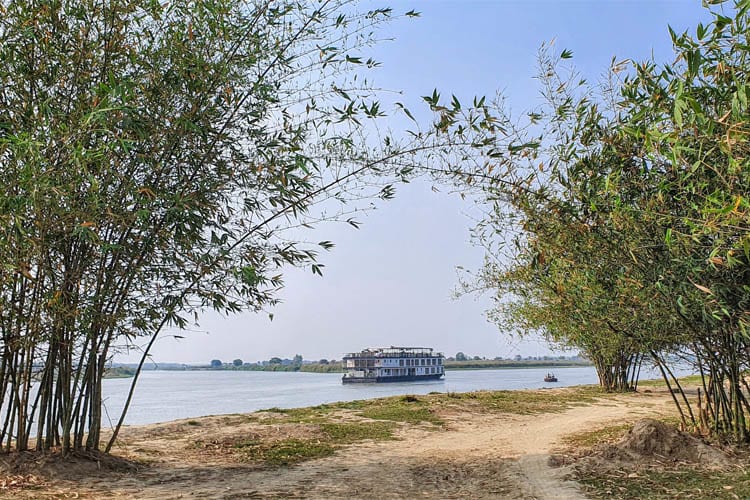
Accommodations
Social Areas










Suites & Cabins


Main Deck
Designed with the same refined style as their counterparts, the four Main Deck Cabins offer an intimate and tranquil retreat close to the ship's central activities. These comfortable twin or double accommodations are conveniently located near the dining room, perfect for those who prioritize easy access to the ship's acclaimed Assamese and Continental cuisine.
Like all accommodations, these cabins are equipped with individual climate control, generous storage space, and feature elegant touches like hand-blocked cotton fabrics and a private French balcony. You can enjoy serene, low-level views of life on the river and bank while relaxing amidst the cabin's colonial charm.



Upper Deck
The fourteen Upper Deck Cabins offer the quintessential river experience, providing explorers with heightened perspective and convenience. These spacious twin or double accommodations are positioned on the ship’s uppermost accommodation level, granting the quickest access to the canopied sundeck and saloon.
Every Upper Deck Cabin features large sliding glass windows and an exclusive French balcony, allowing you to step out and enjoy continuous panoramic views of the Ganges and Hooghly rivers unfolding. Inside, you'll find elegant colonial décor, an en suite shower/WC stocked with Kama Ayurveda toiletries, and thoughtful amenities like a minibar, tea/coffee facilities, and high-quality bathrobes.


Single Cabin
The four dedicated Single Cabins are a unique offering for the independent traveler, providing all the luxury and comfort of the larger staterooms without the supplementary cost often associated with solo occupancy. These cozy accommodations are perfectly appointed with a comfortable bed, en suite facilities, and ample storage, ensuring a completely private and self-contained sanctuary.
These cabins, positioned at the front of the main Deck, still provide the same high-quality amenities, including a minibar, in-room safe, and colonial-inspired décor, ensuring the solo voyage is just as sophisticated and relaxing as a shared one.
Related Cruises
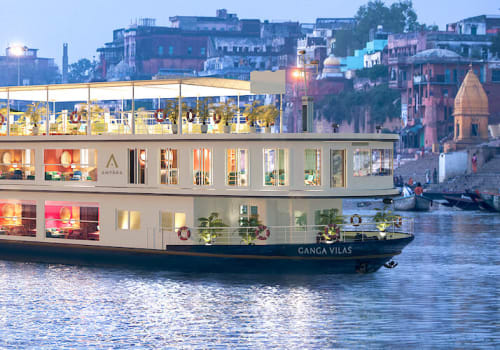
- India
Ganga Vilas

- India
Charaidew II
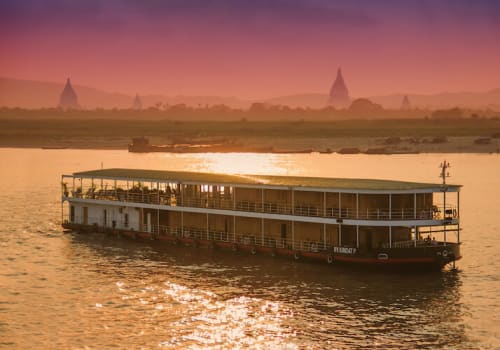
- India
Kindat Pandaw
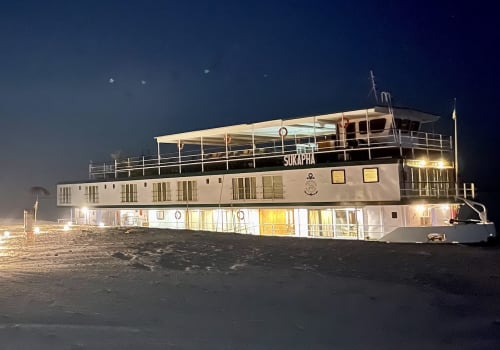
- India
Sukapha
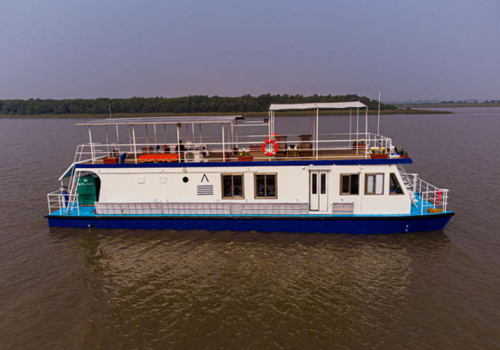
- India
MV Bhitarkanika
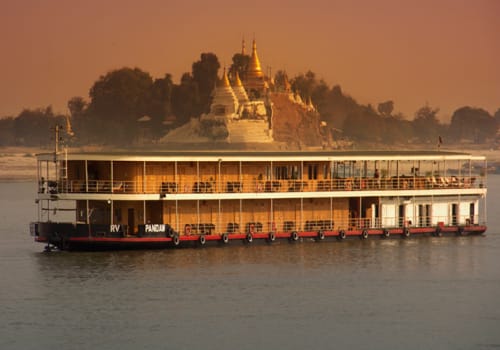
- India
Kalaw Pandaw
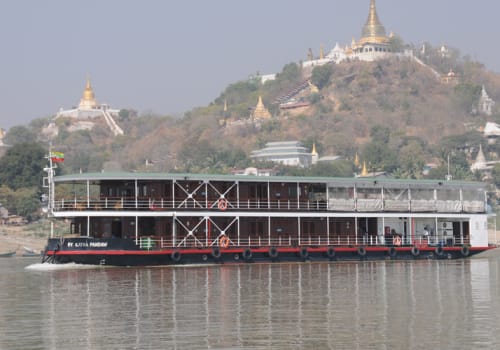
- India
Katha Pandaw

- India
Kochi Pandaw
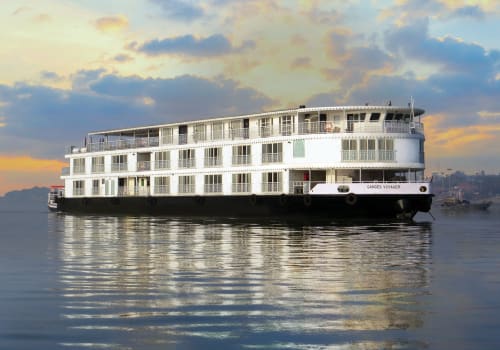
- India
Ganges Voyager
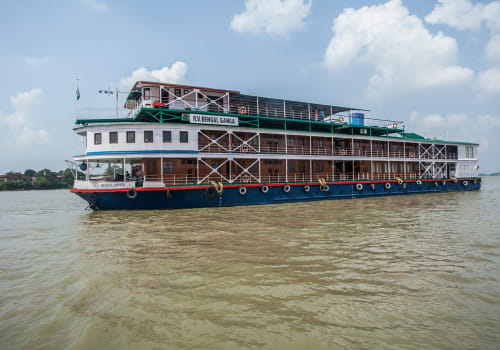
- India

